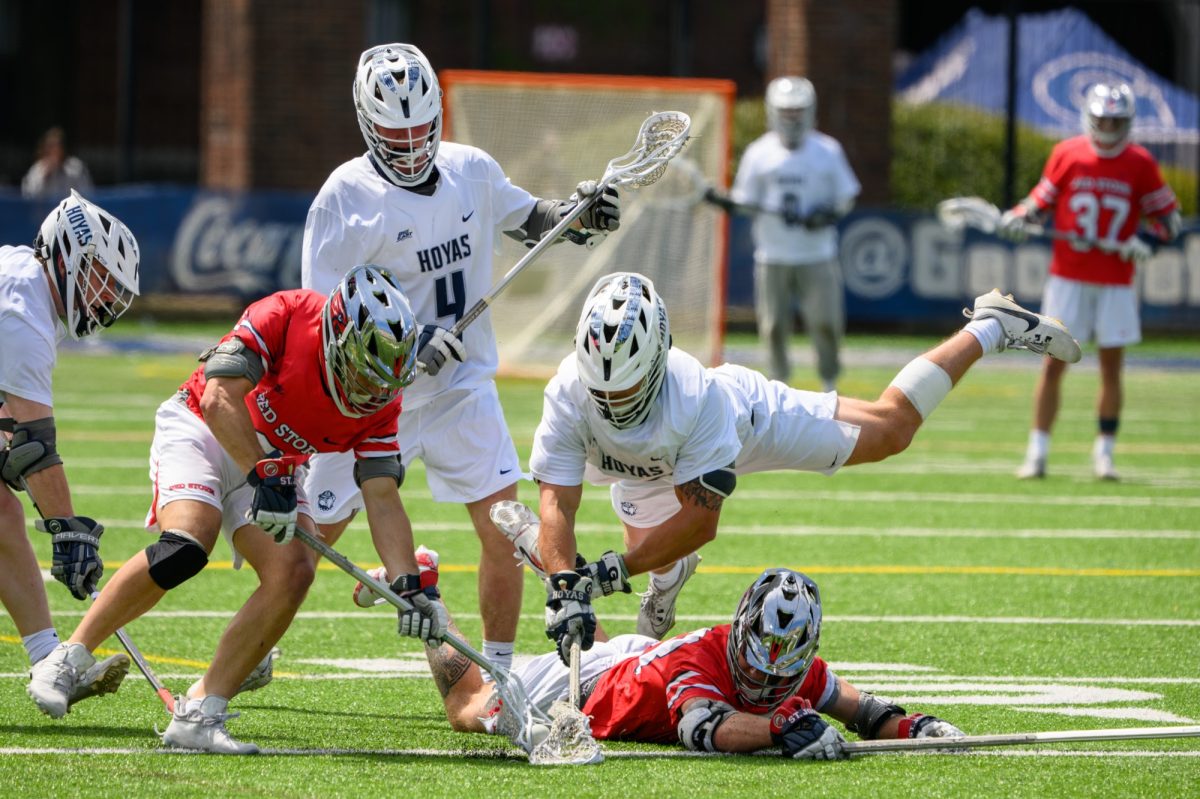“I wanna go fast” — Ricky Bobby
This refrain has become the central philosophy of many NFL teams as they attempt to turn their wide receivers into track runners. While speed is obviously an invaluable asset for offensive players, the offense most teams in the league are trying to recreate is much more than just some quick receivers, and executives make an extremely risky gamble with this holistic approach.
The force behind this change away from quick receivers has been the Super Bowl Champion Kansas City NFL team’s offensive success, according to Las Vegas Raiders General Manager Mike Mayock.
“Let’s be honest, the entire league is chasing [Kansas City],” Mayock said in April. “They keep getting faster and more athletic, more dynamic every time you turn around. Other teams have to do the same.”
The Kansas City receivers are led by the player who most experts believe to be the fastest player in the NFL right now: Tyreek Hill. Hill ran a 4.24 40-yard dash at his Pro Day, just barely above the NFL combine record of 4.22, as well as running a 20.14-second 200-meter dash in high school, which ranked sixth-best in the United States at the time and qualified him for the Olympics.
Hill’s and their other receivers’ speed, coupled with their MVP Quarterback Patrick Mahomes’ bazooka arm, make the Kansas City offense absolutely lethal. In the divisional round, Kansas City scored 28 points in 10 minutes to come back from being down 24-0 just before halftime; they finished the game with an absurd 51 total points, causing the stadium to run out of fireworks because they had scored so often.
Teams around the league have been quick to attempt to build an offense similar to Kansas City’s. In April, Las Vegas selected Henry Ruggs III out of the University of Alabama as the 12th overall pick. This pick puzzled many, as two other receivers, Jerry Jeudy and CeeDee Lamb, were widely considered to be better than Ruggs. Jeudy and Ruggs played together at Alabama and Jeudy outperformed Ruggs in every major receiving category. What better side-by-side comparison could one possibly ask for? Yet Ruggs ran a 4.27-second 40-yard dash whereas Jeudy only ran a 4.46; those 0.19 seconds seemingly outweighed all other comparisons.
Similarly, the Philadelphia Eagles are moving to the Ricky Bobby model, after putting an offense together that features six players who run faster than a 4.4-second 40-yard dash this offseason.
“We want to be fast,” Philadelphia General Manager Howie Roseman said in an April statement.
Speed is useful, but the success of receivers in the league is not predicated on speed alone. The 2019 Offensive Player of the Year and the league’s leading receiver, Michael Thomas, ran just a 4.57-second 40-yard dash, a relatively slow time for a receiver. In fact, of the top 10 receiving leaders in the NFL last season, just one of them ran faster than a 4.4: Julio Jones ran a 4.39, whereas two receivers, Keenan Allen and Jarvis Landry, ran times over a 4.7.
The argument in favor of building a fast offense extends beyond just the statistics of individual receivers. The reason teams opt for a player like Hill is not because he is going to put up monster numbers, but because he is so fast that teams either have to back up their defense, freeing up space for other players, or risk getting burned. For Kansas City, All-Pro tight end Travis Kelce eats up the space created by Hill. In 2019, Kelce finished with the fourth-most receiving yards in the league, undoubtedly in part because of Hill’s presence.
Another great Ricky Bobby-ism is, “If you ain’t first, you’re last.” Prioritizing fast receivers seems to follow this idea, as it could win you a Super Bowl or be an abject failure. However, it is difficult to see these choices being moderately successful, especially when considering the talent teams like Las Vegas are passing up.
The issue with this model is that it is predicated on finding exceptional talents. Kelce is an All-Pro and Mahomes is the best player in the league; they are players any team should hope to find. Teams can try all they want to mimic Kansas City, but unless they strike gold and find the next Mahomes, or something close to him, they would be better served to take talent, like Jeudy and Lamb, that is staring them directly in the face.
Without other extremely talented players, opponents can afford to devote extra attention to speedsters without consequence. For every Hill, there is a John Ross, the 40-yard dash record holder, whose career has been nothing short of a letdown so far after being selected ninth overall in 2017 to what is now the worst team in the NFL, the Cincinnati Bengals.
Austin Barish is a rising sophomore in the College. Running the Post appears online every other week.
















Gj • Jul 25, 2021 at 12:44 am
Incredibly informative and so statistically supported!! Fabulous article